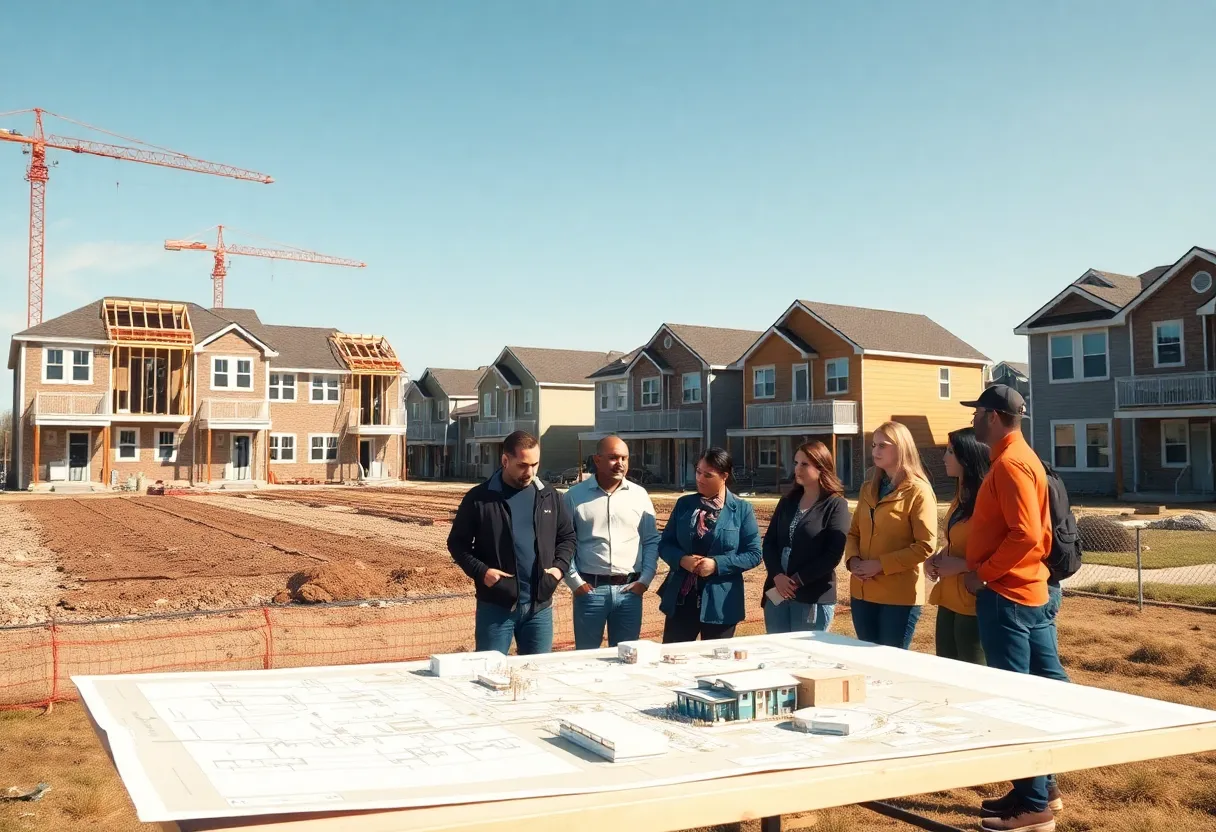Cabarrus County, North Carolina, August 28, 2025
News Summary
Cabarrus County seeded a $2 million Revolving Construction Loan Gap Fund to help nonprofits and social ventures finish affordable and workforce housing projects. Managed by a local housing nonprofit, the fund offers short-term, low-interest loans (1%–3%) to cover final construction gaps so projects can proceed. A Permanent Housing Committee of nonprofit leaders, developers, community members and lenders will review requests with technical support from a local bank. The fund is designed to revolve as loans are repaid and to grow with grants and donations, addressing a significant local housing shortfall amid rapid population and rent growth.
Cabarrus County Launches $2 Million Revolving Construction Loan Gap Fund to Help Finish Affordable and Workforce Housing
Cabarrus County has provided $2 million in seed funding for a new Revolving Construction Loan Gap Fund designed to give nonprofits and community groups the final dollars needed to start or finish affordable and workforce housing projects. The fund is led by a local housing nonprofit and will make short-term, low-interest loans that are repaid to replenish the fund for future use.
What the fund does and how it works
The fund offers short-term gap loans at a flat interest rate between 1% and 3%. These loans are intended to cover the last portion of construction financing so projects can move to the building stage. The loans will not cover full project costs but aim to remove a common financing hurdle that can delay or halt construction. Repayments are intended to revolve back into the fund so the pool grows over time.
Approval, oversight and partnerships
Loan approvals will not be decided solely by a bank. Instead, a local Permanent Housing Committee—made up of nonprofits, housing developers, community members and lenders—will review applications and make funding decisions. A regional bank will provide technical support to the committee so smaller or newer nonprofits have a better chance of receiving funds when traditional lenders might view projects as too risky.
Why the fund is needed now
The region is growing quickly. Cabarrus County is home to nearly 245,000 residents, while one major city in the county now has more than 112,300 people and experienced almost a 7% population increase between 2020 and last year. Over the last decade that city’s population rose by about 33%, placing it among the state’s fastest-growing locales.
A recent regional analysis estimated a housing supply gap in Cabarrus of more than 15,300 homes for sale and rent combined. For households at or below 80% of area median income (AMI), the gap includes roughly 1,267 homes for sale and 2,691 rental units. For a family of four, 80% of AMI is noted as below $89,750, and those households typically qualify for affordable housing.
Financial context and housing stress
Construction and land costs have risen alongside population growth. Typical private construction loan gap rates are often between 5% and 8%, making the new fund’s 1%–3% rate notably cheaper for short-term needs. The county’s median household income is about $86,084, and roughly 27% of homes in the county are considered cost-burdened—meaning those households spend more than 30% of income on housing.
Average rents in the area are above $1,500, and year-over-year rental increases have been among the highest in the state. Local service organizations report rising demand for housing help as migration and economic growth push prices upward.
How projects can use the fund
Nonprofits and social ventures may apply for loans through the nonprofit leading the initiative. The fund is meant to be flexible enough to support both for-sale and rental projects, lease-to-own models, tiny home sites and mixed-income developments. The plan is to grow the fund over time with repayments, additional government grants, private donations and other contributions.
Local projects already underway
Several projects in the county illustrate the kinds of developments the fund is designed to support. A 26-unit for-sale and lease-to-own townhome development opened earlier this year in a neighborhood in the city. A historic church property was purchased and is being converted into a mixed-income project with community conference space and artist incubator space. A tiny home village is also in development downtown.
A larger transitional housing effort is being built on roughly 10 acres in a former textile mill area. That campus is planned in three phases, ultimately creating 96 apartments to serve up to 300 people, including on-site services, daycare options and space for retail, job opportunities and health care. The full campus is estimated to cost about $13.5 million and is expected to take several years to complete, with the first phase of apartments and program space scheduled in the nearer term.
Local government and budget actions
In 2021, the city approved dedicating 1% of property tax revenue toward affordable housing. The city’s approved budget for the upcoming fiscal year sets aside about $1.8 million for housing programs, showing continued local support alongside the county’s seed contribution to the new revolving fund.
Next steps and outlook
The gap fund is accepting applications from eligible nonprofits and community groups. Organizers expect the fund to become a local tool to speed construction starts and reduce financing obstacles for projects that increase affordable and workforce housing supply. As projects repay loans and new funding sources are added, the fund is intended to expand its reach and support more developments.
Frequently asked questions (FAQ)
Who can apply for a loan from the fund?
Nonprofits and social ventures that develop affordable or workforce housing may apply through the local nonprofit managing the fund.
How much of a project will the fund cover?
The fund is designed to provide the final portion of construction financing, not full project costs. Loans are intended to fill financing gaps that block construction from starting or continuing.
What are the loan terms?
Loans are short-term and carry a flat interest rate in the range of 1% to 3%. The goal is to offer a cheaper short-term option than typical private gap financing.
Who decides which projects are approved?
Decisions will be made by a Permanent Housing Committee composed of local nonprofits, housing developers, community members and lenders, with technical support from a regional bank.
How will the fund grow over time?
Repayments will replenish the fund. Additional growth is expected from future government grants, private dollars and donations.
Where can applicants learn more?
Interested organizations can contact the nonprofit managing the fund for application details and program criteria.
Key features at a glance
| Feature | Details |
|---|---|
| Seed funding | $2 million from county government |
| Loan type | Short-term revolving construction gap loans |
| Interest rate | 1%–3% (flat rate) |
| Typical market gap rates | 5%–8% (for comparison) |
| Approval body | Permanent Housing Committee (nonprofits, developers, community members, lenders) |
| Support partners | Regional bank provides technical assistance |
| Primary goal | Provide final construction dollars to start or finish affordable and workforce housing projects |
| Growth plan | Revolving repayments, grants, private donations |
| Application route | Apply through the managing nonprofit |
Deeper Dive: News & Info About This Topic
Additional Resources
- Charlotte Observer: Cabarrus County launches $2M Revolving Construction Loan Gap Fund
- Wikipedia: Cabarrus County, North Carolina
- WSOC-TV: Cabarrus County launches $2M fund to boost affordable housing
- Google Search: Revolving Construction Loan Gap Fund Cabarrus
- Independent Tribune: Local coverage of Cabarrus affordable housing efforts
- Google Scholar: affordable housing Cabarrus County North Carolina
- The Charlotte Post: Charlotte region growth strains affordable housing stock
- Encyclopedia Britannica: Affordable housing
- WCNC: Cabarrus County organization seeking solutions to housing affordability
- Google News: Cabarrus County affordable housing





